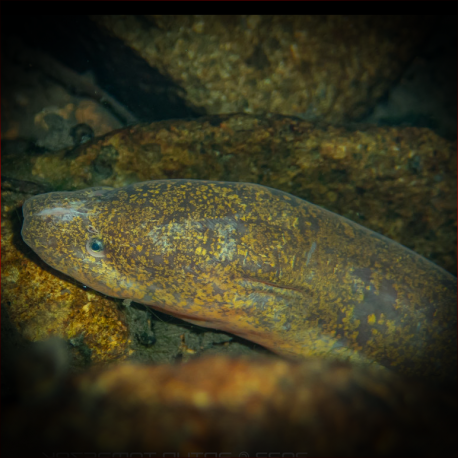More info
Datasheet
| Minimum Tank Size | 680 litres / 179.64 US gallons |
| Maximum Size | 100.0cm / 39.37inches |
| Temperature | 25°C / 77.00°F - 28°C / 82.40°F |
| Hardness | 3-25ºdH |
| pH | 6.0-8.0 |
General Description
An incredibly hardy species, Monopterus albus, known as the Swamp Eel, possesses unique adaptations for survival, including the ability to traverse short distances over land and burrow deeply into moist earth during dry spells. It features a single gill slit for air trapping with specially adapted gills and accessory breathing organs resembling lung-like sacs. With rudimentary eyes and lacking typical eel characteristics, it belongs to the order Synbranchiformes, distinct from true eels. Distributed widely across Asia and introduced to Hawaii and the USA, this species thrives in varied aquatic habitats, displaying adaptability to stagnant and polluted conditions.
Aquarium Setup
For optimal care, provide Swamp Eels with ample hiding spots using plants, rocks, bogwood, and plastic piping. A minimum tank size of 680 liters is necessary, along with a securely fitted, heavy tank cover to prevent escapes as these eels are prone to wandering. Water conditions should be maintained at a temperature range of 25-28°C, pH of 6.0-8.0, and hardness of 3-25°dH (see table for details).
Behaviour
Best suited for solitary housing due to their large size and piscivorous nature, Swamp Eels are mainly nocturnal, making them elusive in the wild. They exhibit a secretive demeanor and are less commonly observed. Escaping captivity if given the chance, they are known to be territorial and may display aggression towards tank mates.
Feeding and Diet
In the wild, Swamp Eels feed on fish, amphibians, and invertebrates. In aquarium settings, they readily accept a diet consisting of prawns, white fish like lancefish, and earthworms. Regular feeding with a varied diet is essential to ensure their nutritional requirements are met.
Reproduction & Dimorphism
Reproduction in captivity remains a challenge, with spawning typically occurring in shallow waters where males guard eggs in a loose bubble nest. Interestingly, all fry hatch as female and may transition to males upon reaching maturity. While no external sexual dimorphism exists, male eels are reported to grow larger.
Habitat and Distribution
Native to regions including India, Myanmar, China, and Australia, the Swamp Eel thrives in diverse habitats such as rivers, ponds, rice paddies, and swamps. Due to its adaptability to harsh environments and ability to survive in poorly oxygenated waters, it remains widespread across various countries in Southeast Asia and has been introduced to new territories.

